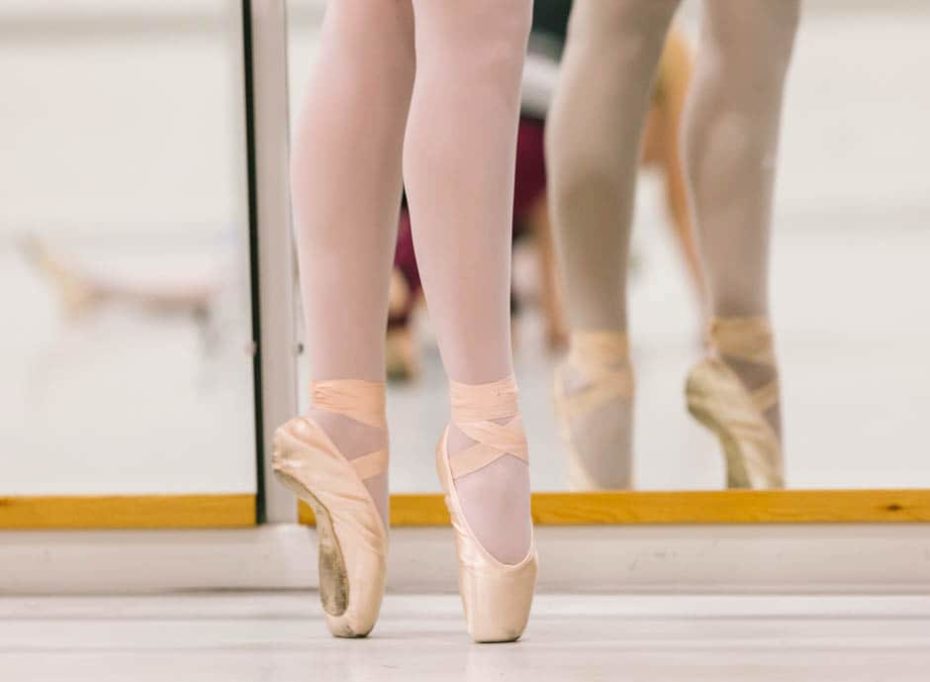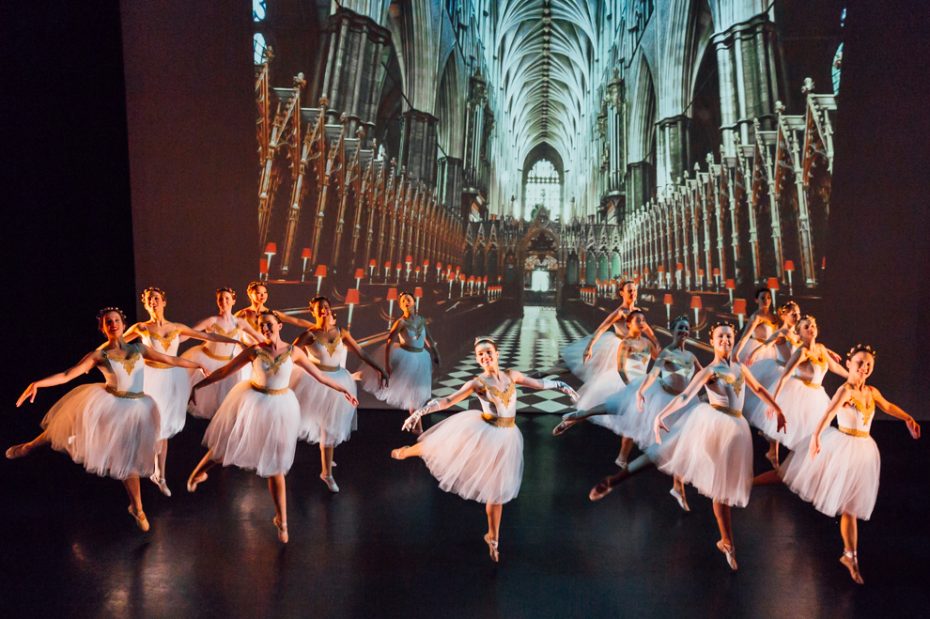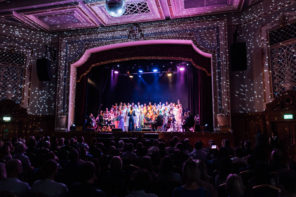We've all seen the numerous Instagram posts of graceful ballet dancers balancing delicately en pointe but what is pointe and where to start?
What is Pointe?
Going en pointe is traditionally a technique for women however both men and women are welcome to learn pointe in our classes. It is where the dancer will stand on the tip of their toes in specially designed shoes. The shoes are much harder than ballet shoes. Most pointe shoes have a resin based material in the toe section which is hardened, but some modern shoes are made of more durable products such as Gaynor Minden shoes. They are all designed to support the full weight of the dancer.
The effect is simply beautiful, the essence of grace and poise. If searching for 'ballet dancer' on Pinterest, most of the shots you will see will be dancers en pointe. As dancers progress they are able to do more advanced steps and balances en pointe and eventually complex turns including fouettés.
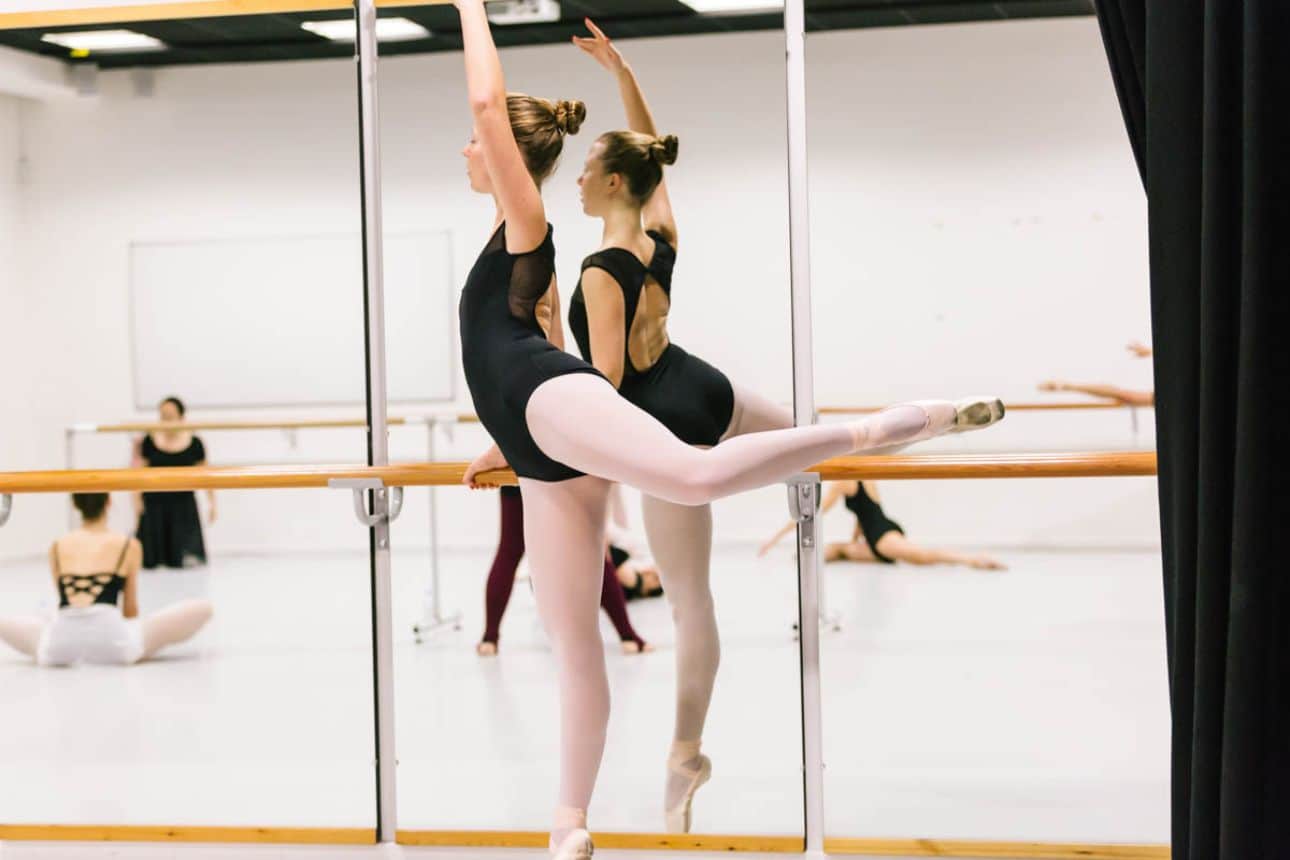
Ready to go en Pointe?
Experience of ballet is essential. You need to be able to do all the steps on demi pointe before you can go onto full pointe. Your teacher can advise you if you are keen to learn. We recommend completing at least one full Ballet Beginners course before trying pointe. We also recommend continuing your ballet classes while you train in pointe to expand your knowledge, skill, and vocabulary, especially if ballet is still new to you.
Confidence and strength are key. To be able to support yourself en pointe, you need strong feet and ankles. In particular the small group of muscles in the ball of your feet alongside your metatarsus bones. The idea is that you can rise in demi pointe and then use the strength in your feet, ankles and toes to pull you up on to full pointe, balancing your toes inside the shoe.
Don’t despair if you are not quite ready. Progressing in ballet takes time so be patient with yourself. It is better to ensure you are fully ready to prevent any injuries.
Preparing for Pointe
There are many exercises you can do to strengthen your feet before and during pointe training.
Firstly, simple rises in parallel with feet together from flat to demi pointe. Ensure you keep your knees straight and ankles are in line with toes, and knees are in line with ankles. Practice in front of a mirror to ensure correct alignment. It is very easy for the heel to push out to the side when doing this. You want to keep your heel in line with your toes, focusing on pulling up.
You also want to ensure your spine is straight, pulling up through your head and utilising your core. If anything, you want your weight slightly forward but ensure your whole body is straight. A good way to correct posture is to imagine you are in between two walls, one in front and one behind. You cannot stick any part of your body out as it will hit the brick wall.
Before Your First Class
First things first, you need to be correctly fitted with the right pointe shoes. These have a hard sole to support your feet and ankles. Ribbons are sewn onto the inside of each shoe.
Being correctly fitted is of the utmost importance. Pointe shoes are often handmade so each individual shoe may have a slightly different fit. We recommend going to a professional dance shoe shop to be correctly fitted. Most dance shops in London are located on Drury Lane, near Covent Garden station. Capezio, Bloch, Freeds, and Dancia International are all great dance shops who cater for adults as well as children.
It is best to book these appointments in advance, however some shops can fit you there and then. Allow 30 minutes - 1 hour to ensure you have enough time. Before you go, make sure you take a pair of ballet tights or ballet socks, and that your nails are trimmed short. It really helps!
Try different shops before choosing. Most shops will allow you to note down the unique number of your favourite shoe so you can come back if that was the best fit. Different brands will fit differently so take some time finding the right shoe for you, it will be worth it in the long run.
Also remember to get some elastic, ribbons and any protection you would like. We recommend the more the better! Definitely ouch pads which sit over your toes, make sure to get your shoes fitted with these on so the shoes fit correctly. You can also purchase animal wool and gel toe protectors which sit on each big toe to help support and protect. It is also useful to wear footlets to keep all of your padding in place. Take the time to work out the best way to protect your feet as each foot is different.
Preparing your Pointe Shoes
A great tip from our Dance Tutor Lorraine Dougall, is to wear your pointe shoes around the house. This works really well to soften the shoe and mould to your foot. Also you can spend some time flexing the shoe back and forth to soften the sole. Do not ‘break’ the shoe as you will find lots of professional dancers doing on YouTube. You will need some hardness in the sole to help support your feet and ankles as you begin learning. Our tutor will show you how to break the shoes in specifically for your feet and strength.
The aim is to be able to go up onto demi pointe so it is worth wearing the shoes and doing some rises to demi pointe with the aid of a barre if possible. Anything to help support your weight.
Next steps are to sew your elastic and ribbons in. This takes longer than you would think! Our tutor in our pointe classes will go through the correct way to sew these in your first class. But if you want to be prepared before you start there are some good YouTube videos.
Before Your First Class
First things first, you need to be correctly fitted with the right pointe shoes. These have a hard sole to support your feet and ankles. Ribbons are sewn onto the inside of each shoe.
Being correctly fitted is of the utmost importance. Pointe shoes are often handmade so each individual shoe may have a slightly different fit. We recommend going to a professional dance shoe shop to be correctly fitted. Most dance shops in London are located on Drury Lane, near Covent Garden station. Capezio, Bloch, Freeds, and Dancia International are all great dance shops who cater for adults as well as children.
It is best to book these appointments in advance, however some shops can fit you there and then. Allow 30 minutes - 1 hour to ensure you have enough time. Before you go, make sure you take a pair of ballet tights or ballet socks, and that your nails are trimmed short. It really helps!
Try different shops before choosing. Most shops will allow you to note down the unique number of your favourite shoe so you can come back if that was the best fit. Different brands will fit differently so take some time finding the right shoe for you, it will be worth it in the long run.
Also remember to get some elastic, ribbons and any protection you would like. We recommend the more the better! Definitely ouch pads which sit over your toes, make sure to get your shoes fitted with these on so the shoes fit correctly. You can also purchase animal wool and gel toe protectors which sit on each big toe to help support and protect. It is also useful to wear footlets to keep all of your padding in place. Take the time to work out the best way to protect your feet as each foot is different.
Preparing your Pointe Shoes
A great tip from our Dance Tutor Lorraine Dougall, is to wear your pointe shoes around the house. This works really well to soften the shoe and mould to your foot. Also you can spend some time flexing the shoe back and forth to soften the sole. Do not ‘break’ the shoe as you will find lots of professional dancers doing on YouTube. You will need some hardness in the sole to help support your feet and ankles as you begin learning. Our tutor will show you how to break the shoes in specifically for your feet and strength.
The aim is to be able to go up onto demi pointe so it is worth wearing the shoes and doing some rises to demi pointe with the aid of a barre if possible. Anything to help support your weight.
Next steps are to sew your elastic and ribbons in. This takes longer than you would think! Our tutor in our pointe classes will go through the correct way to sew these in your first class. But if you want to be prepared before you start there are some good YouTube videos.
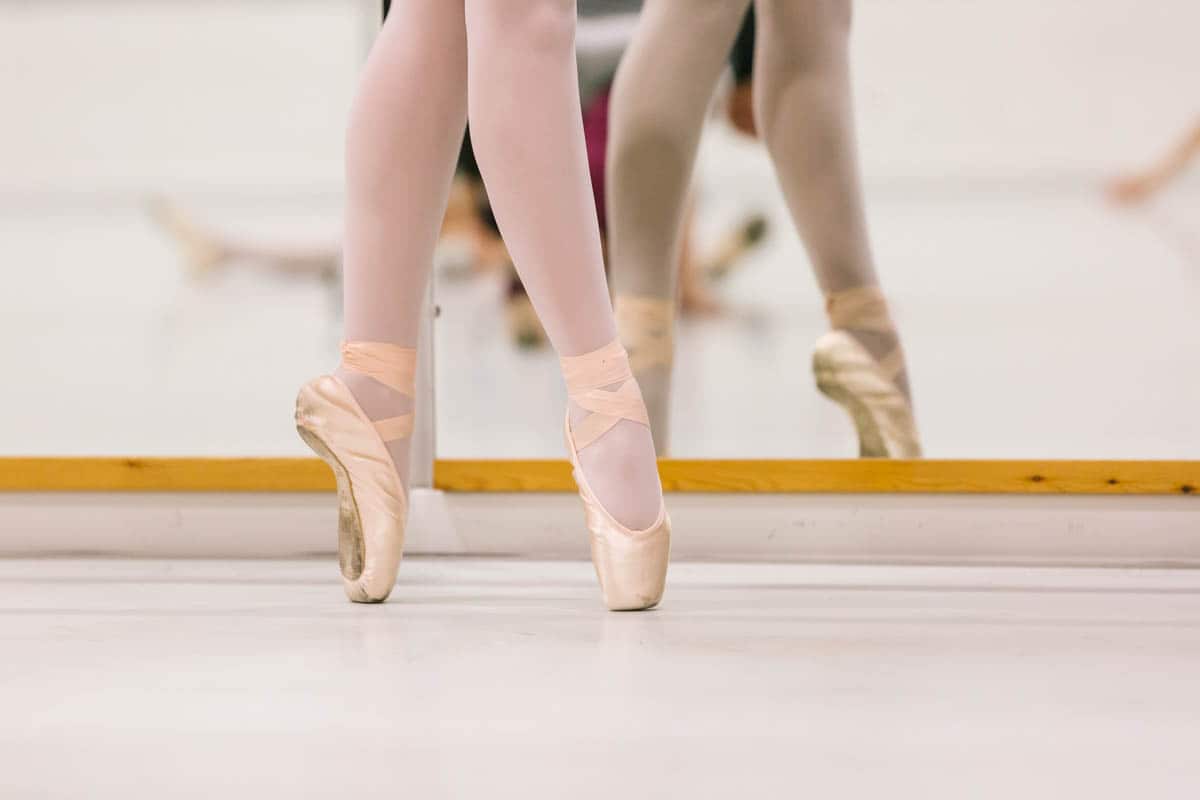
Strengthening Feet and Ankles
There are lots of exercises you can do at home alongside your pointe classes to help strengthen your feet and ankles. First a simple plié in parallel with feet together and rise onto demi pointe. Do this with bare feet, socks or soft ballet shoes to give your feet the flexibility to move.
Once feeling more confident, you can roll through the feet one at a time, still in parallel with feet together. Start with one foot on demi pointe, and the other flat. Bring your second foot to demi pointe so you are in a rise. Slowly roll through the other foot until it is flat. Then repeat, bringing that same foot back to demi pointe and slowly rolling through the other foot to flat. Do this exercise slowly to really strengthen and control your muscles.
You can move on and do this same exercise in first position. Start with a plié to relax the knees first, then rise to demi pointe in first position with knees straight and pulled up (be careful not to lock your knees). Ensure you keep heels over toes, and knees, ankles and toes all in line. To do this, focus turning out from your hips as if you are trying to hold a five pound note between the tops of your legs.
You can also use a theraband to help strengthen the muscles in your feet. Sit on the floor and stretch your legs out straight in front of you. Wrap the band around the ball of your foot. It should sit just before the joint of your toes. Slowly stretch your toes away from the band which you are holding taut and back again. Try and keep your toes as straight as possible being careful not to scrunch them up.
Next Steps
New to Ballet - Start with our Ballet Beginners course.
Completed our Ballet Beginners course - speak to your tutor about our Pointe classes and if they think you are ready.
Had Pointe classes before - take our Pointe Improvers course.




